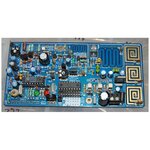Imalu3055
Member level 1
Hello!
Would someone be kind enough to tell me what is the method of setting the preset P1, in the "PLL transmiter rdvv300mW"?
It is not easy for me to get the BF980 FET, I could replace it with the 3N200, with the modifications for different pins, of course.
Thanks a lot
Would someone be kind enough to tell me what is the method of setting the preset P1, in the "PLL transmiter rdvv300mW"?
It is not easy for me to get the BF980 FET, I could replace it with the 3N200, with the modifications for different pins, of course.
Thanks a lot
